A definition of dot product (wich is an inner product) is
x . y = |x| * |y| * cos(a)
Where a is the smallest angle between x and y.
It is easy to see that x . y = 0, if a=90 deg (pi rad).
This means that if you have a fixed normal vector w, a hyperplane given by:
x . w = 0
is the set of all points that x can "point at" given that x has to be orthogonal to w.
Now, a hyperplane given by:
x . w + b = 0
is the set of all points that x can "point at" such that x . w is a constant. As x gets longer, |x| increases, the angle, a, has to get closer to 90 deg (pi rad), cos(a) decreases, to produce the same constant result. If you however take x pointing in the exact opposite direction of w, cos(a) = -1 and |x| = b (provided that w is of unit length).
It turns out that the plane given of this set of points is parallell to x . w = 0, and shifted in space the distance -b (in the direction of w) still given that w is of unit length.
This answer is probably not going to help the op, but hopefully someone else will benefit from it.
